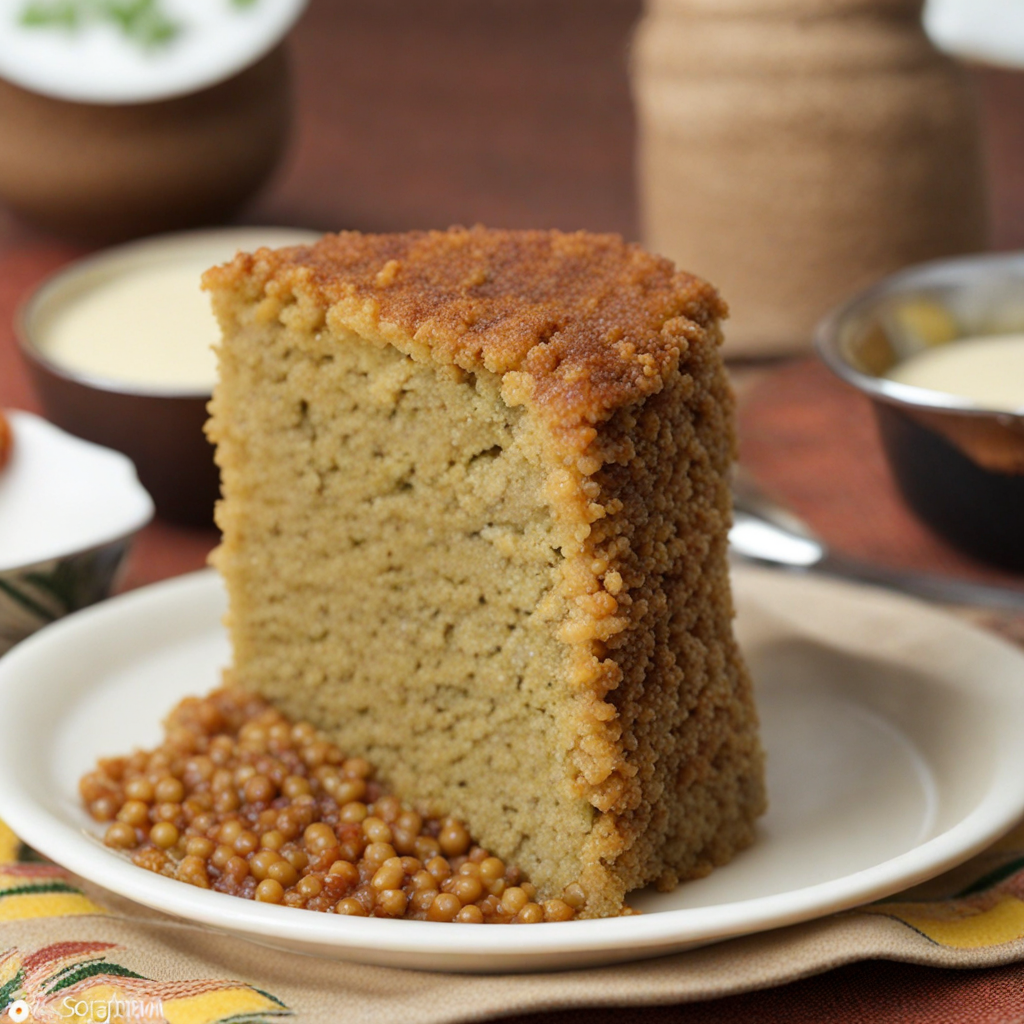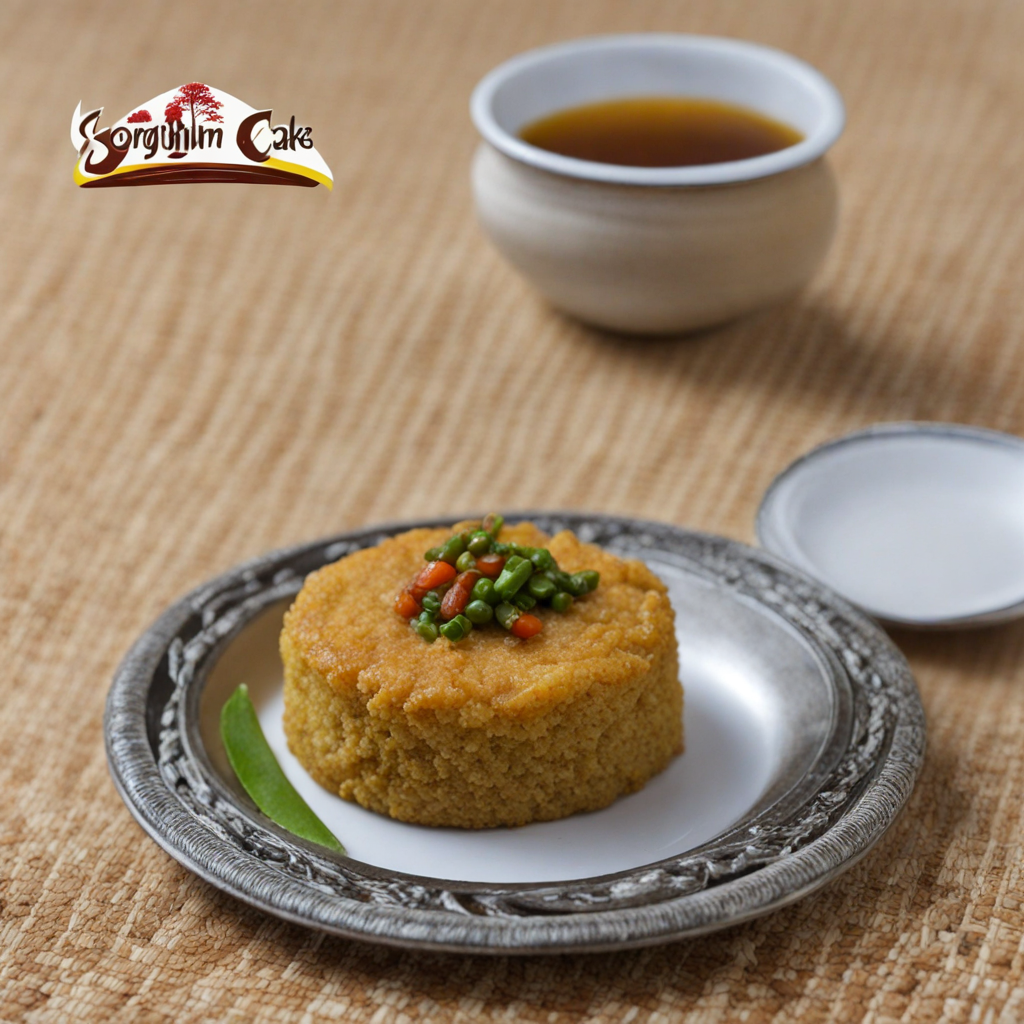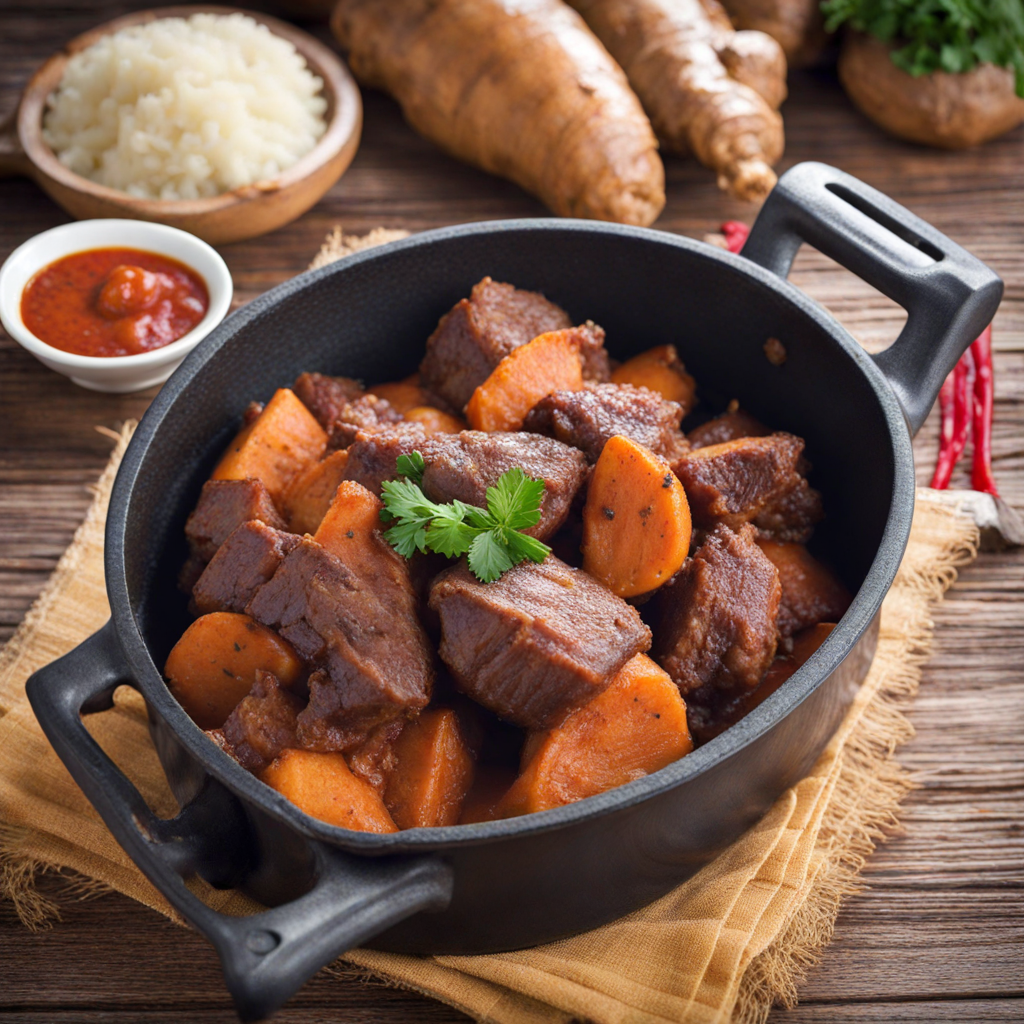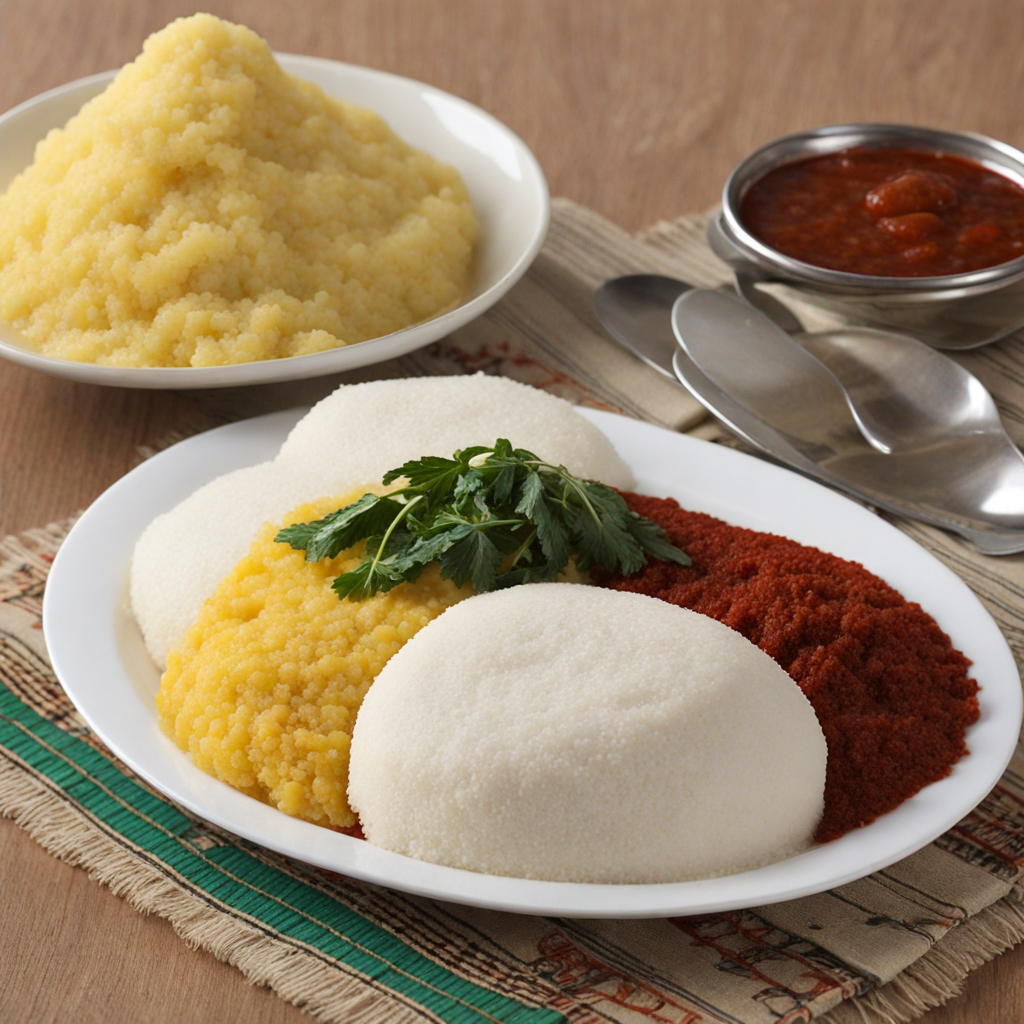Umutsima w'amasaka
Umutsima w'amasaka is a traditional Rwandan dish that showcases the rich agricultural heritage of the region, typically made from a blend of maize flour and cassava flour. This delightful dish is often prepared by mixing the two flours with water to create a smooth, thick porridge-like consistency. Once cooked, it takes on a subtle, earthy flavor profile that is both comforting and satisfying. The texture is creamy yet slightly dense, making it a perfect accompaniment to a variety of savory stews and grilled meats. The dish is not only a staple in Rwandan households but also a testament to the country's culinary identity, often served during communal gatherings and celebrations. Umutsima w'amasaka is versatile, allowing for a range of adaptations; some variations might include the addition of spices or vegetables to enhance its flavor. When paired with a rich sauce, such as a spicy groundnut stew or a savory vegetable medley, it elevates the dining experience, allowing the diner to appreciate the balance between the mildness of the umutsima and the robust flavors of the accompaniments. Eating Umutsima w'amasaka is an experience that connects you to the heart of Rwandan culture. Traditionally eaten with the hands, it encourages a communal atmosphere where sharing and enjoyment go hand in hand. The dish embodies a sense of togetherness and is often enjoyed by families and friends, making it more than just a meal; it's a celebration of Rwandan hospitality and warmth. For those adventurous enough to explore new tastes, Umutsima w'amasaka offers a unique glimpse into the culinary traditions of Rwanda, promising to leave a lasting impression on your palate.
How It Became This Dish
Umutsima w'amasaka: A Cultural and Culinary Journey from Rwanda Origins and Ingredients Umutsima w'amasaka, a traditional Rwandan dish, is primarily made from a unique blend of ingredients that define its character and nutritional value. The dish consists predominantly of maize flour (amasaka) and is often mixed with cassava flour, producing a thick, hearty porridge or cake-like consistency. This staple food has its roots deeply embedded in the agricultural practices of the Rwandan people, reflecting the country's reliance on maize and cassava as key crops. The cultivation of maize in Rwanda can be traced back to the 19th century when it was introduced from the Americas. Cassava, on the other hand, is indigenous to South America and was brought to Africa by Portuguese traders. Since then, both crops have become integral to Rwandan cuisine, and their combination in Umutsima w'amasaka offers a taste of the country’s agricultural history. Cultural Significance Umutsima w'amasaka is more than just a food item; it represents a cornerstone of Rwandan culture and identity. Traditionally consumed during communal gatherings, ceremonies, and family celebrations, it embodies the values of sharing, togetherness, and hospitality that are central to Rwandan society. The dish is often served alongside other foods, such as vegetables, meat, or beans, creating a balanced meal that reflects the agricultural bounty of the region. In Rwandan culture, food plays a vital role in social cohesion. Umutsima w'amasaka, with its simple preparation and communal consumption, reinforces relationships among family members and friends. During significant cultural events, such as weddings or harvest festivals, the serving of this dish symbolizes abundance and the importance of community ties. It serves as a reminder of the shared experiences and collective memories that shape the Rwandan identity. Preparation and Variations The preparation of Umutsima w'amasaka involves mixing maize flour with cassava flour, water, and a pinch of salt. The mixture is then cooked over gentle heat, stirring constantly until it reaches a thick, smooth consistency. Traditionally, a wooden spoon or a “umugati” (a long wooden stick) is used to stir the porridge, a technique passed down through generations. The cooking process can take anywhere from 30 minutes to an hour, depending on the desired thickness. There are numerous variations of Umutsima w'amasaka, influenced by regional ingredients and personal preferences. Some may incorporate groundnut paste or other local spices to enhance flavor, while others may add vegetables or meat to create a more substantial meal. These variations reflect the adaptability of Rwandan cuisine, as families often use what is available in their gardens or local markets. Historical Development Historically, the preparation and consumption of Umutsima w'amasaka have evolved alongside Rwandan society. In pre-colonial times, the dish was primarily consumed by the farming communities, substantially contributing to their daily caloric intake. The introduction of European colonialism in the late 19th and early 20th centuries brought significant changes to the agricultural landscape of Rwanda. Traditional farming practices were altered, and cash crops became a priority. However, maize and cassava remained staple foods, ensuring the continued relevance of Umutsima w'amasaka in local diets. The post-colonial period saw Rwanda grappling with various challenges, including political instability and economic hardships. Despite these difficulties, the resilience of Rwandan culture allowed Umutsima w'amasaka to remain a staple food, symbolizing sustenance and survival during tough times. The dish became a source of comfort for many, providing a sense of normalcy amidst chaos. In recent years, the Rwandan government has made significant strides in promoting food security and sustainable agriculture. Efforts to improve agricultural practices and diversify crop production have contributed to the resurgence of traditional dishes like Umutsima w'amasaka. Rwandan cuisine has gained recognition on the global stage, with Umutsima w'amasaka being celebrated as a symbol of the country's rich culinary heritage. Modern Interpretations and Global Recognition As Rwandan cuisine has gained international attention, Umutsima w'amasaka has started to appear in restaurants and culinary festivals around the world. Chefs are finding creative ways to reinterpret this traditional dish, incorporating modern cooking techniques while preserving its essential attributes. This fusion of traditional and contemporary methods showcases the versatility of Rwandan cuisine and invites a broader audience to appreciate its flavors and cultural significance. Moreover, the global trend toward plant-based diets has further fueled interest in Umutsima w'amasaka. As more people seek nutritious, wholesome foods, the dish stands out for its health benefits, being rich in carbohydrates and fiber while being gluten-free if made solely from maize and cassava flour. Its simplicity and nutritional value resonate with those looking to incorporate more wholesome foods into their diets. Conclusion Umutsima w'amasaka is a poignant reflection of Rwanda's history, culture, and resilience. From its origins as a staple food in pre-colonial farming communities to its place in modern cuisine, this dish embodies the spirit of Rwandan society. It serves as a reminder of the agricultural heritage that continues to shape the nation while fostering communal bonds and cultural identity. As Rwanda continues to evolve, so too will Umutsima w'amasaka, adapting to new influences while remaining a cherished symbol of home, family, and tradition. Whether served during a festive gathering or enjoyed in the quiet of a family meal, Umutsima w'amasaka remains a testament to the enduring power of food in nurturing relationships and preserving cultural heritage.
You may like
Discover local flavors from Rwanda







